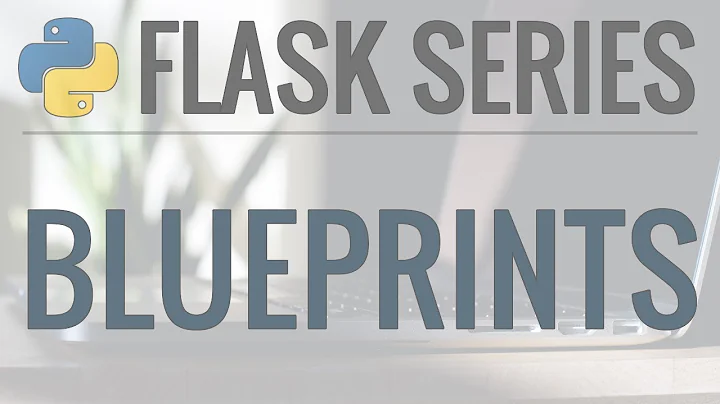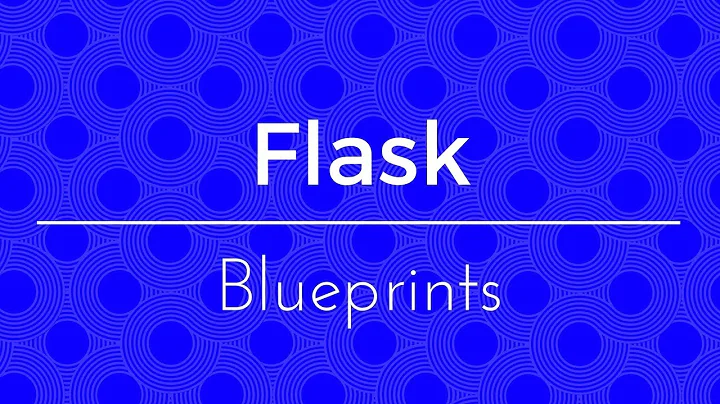How to use Flasgger with Flask applications using Blueprints?
Solution 1
Now there is an example of blueprint app in https://github.com/rochacbruno/flasgger/blob/master/examples/example_blueprint.py
"""
A test to ensure routes from Blueprints are swagged as expected.
"""
from flask import Blueprint, Flask, jsonify
from flasgger import Swagger
from flasgger.utils import swag_from
app = Flask(__name__)
example_blueprint = Blueprint("example_blueprint", __name__)
@example_blueprint.route('/usernames/<username>', methods=['GET', 'POST'])
@swag_from('username_specs.yml', methods=['GET'])
@swag_from('username_specs.yml', methods=['POST'])
def usernames(username):
return jsonify({'username': username})
@example_blueprint.route('/usernames2/<username>', methods=['GET', 'POST'])
def usernames2(username):
"""
This is the summary defined in yaml file
First line is the summary
All following lines until the hyphens is added to description
the format of the first lines until 3 hyphens will be not yaml compliant
but everything below the 3 hyphens should be.
---
tags:
- users
parameters:
- in: path
name: username
type: string
required: true
responses:
200:
description: A single user item
schema:
id: rec_username
properties:
username:
type: string
description: The name of the user
default: 'steve-harris'
"""
return jsonify({'username': username})
app.register_blueprint(example_blueprint)
swag = Swagger(app)
if __name__ == "__main__":
app.run(debug=True)
Solution 2
You just need to add your blueprint's name when you reference endpoint. Blueprints create namespaces. Example below. And useful tip: use app.logger.info(url_for('hello1')) for debugging problems with endpoint - it shows very useful error messages like this Could not build url for endpoint 'hello1'. Did you mean 'api_bp.hello1' instead?.
from flask import Flask, Blueprint, url_for
from flask_restful import Api, Resource
from flasgger import Swagger, swag_from
app = Flask(__name__)
api_blueprint = Blueprint('api_bp', __name__)
api = Api(api_blueprint)
class Hello(Resource):
@swag_from('hello1.yml', endpoint='api_bp.hello1')
@swag_from('hello2.yml', endpoint='api_bp.hello2')
def get(self, user=''):
name = user or 'stranger'
resp = {'message': 'Hello %s!' % name}
return resp
api.add_resource(Hello, '/hello', endpoint='hello1')
api.add_resource(Hello, '/hello/<string:user>', endpoint='hello2')
app.register_blueprint(api_blueprint)
swagger = Swagger(app)
app.run(debug=True)
Related videos on Youtube
Naymesh Mistry
Engineering and integrating Java enterprise software since 2005.
Updated on September 14, 2022Comments
-
Naymesh Mistry over 1 year
I am adding Swagger UI to my Python Flask application using Flasgger. Most common examples on the Internet are for the basic Flask style using
@app.route:from flasgger.utils import swag_from @app.route('/api/<string:username>') @swag_from('path/to/external_file.yml') def get(username): return jsonify({'username': username})That works.
In my application however, I am not using
@app.routedecorators to define the endpoints. I am using flask Blueprints. Like following:from flask import Flask, Blueprint from flask_restful import Api, Resource from flasgger.utils import swag_from ... class TestResourceClass(Resource): @swag_from('docs_test_get.yml', endpoint='test') def get() : print "This is the get method for GET /1.0/myapi/test endpoint" app = Flask(__name__) my_api_blueprint = Blueprint('my_api', __name__) my_api = Api(my_api_blueprint) app.register_blueprint(my_api_blueprint, url_prefix='/1.0/myapi/') my_api.add_resource(TestResourceClass, '/test/' endpoint='test', methods=['GET', 'POST', 'PUT', 'PATCH', 'DELETE']) ....As seen above, I used
@swag_fromdecorator on theTestResourceClass.get()method which is bound to the GET method endpoint. I also have the endpoint=testmatching in the two places.But I am not getting anything on the Swagger UI, it is all blank. The
docs_test_get.ymlfile does contain the valid yaml markup to define the swagger spec.What am I missing? How can I get Flasgger Swagger UI working with Flask Blueprint based setup?
-
Naymesh Mistry about 7 yearsI tested that file path is not an issue in swag_from when it is used in non blueprint style api definitions.
-
diplosaurus over 4 yearsThank you, this is completely unclear from the
flasggerdocs and examples.




